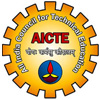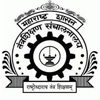Nanoworld of science and technology plays a crucial role in make in India. Government of India, state governments in India, commercial industries, academic and research institutes have great interest in developing nanobased material. Nanoworld of science and nanotechnology is a wide and multidisciplinary area of research and development that has been growing worldwide in last few years. The word ‘nano’ means ’dwarf’ in Greek. One nano is one billionth of a meter. Nanoscience or nanotechnology deals with very small objects at atomic level. Nanoscience and nanotechnology belongs to the materials having dimensions in the size range of 1 to 100 nm (1nm=10-9 m)

Physicist Richard Feynman, the father of nanotechnology
Credit goes to Richard P. Feynman (Nobel Laureate in Physics, 1965 for introducing the concept of nanotechnology about 50 years ago. His lecture entitled “There’s Plenty of Room at the Bottom” was one of famous lectures delivered in the annual meeting of the American Physical Society at California Institute of Technology on 26 December 1959. He presented an idea of writing twenty four volumes of the Encyclopedia Britannica on the head of a pin, and miniaturizing the computer (see Feynman, 1992). This can be made possible by changing the atomic structure as per the need. Dr. Feyman inspired many scientists till today.
Nanotechnology is an ability to control and manipulate individual atoms and molecules. In everyday life, the food we eat, the clothes we wear, the buildings and houses we live in, even our own bodies is made up of atoms. But is impossible to see an atom with the naked eye or with the microscopes we use in the laboratory. We need nanoscopes or microscopes with nanoscales to see the objects with atomic dimensions. Now a days scientists use spectroscopy such as XRD (X ray diffraction), SEM(Scanning electron microscope) , FTIR (Fourier Transform Infrared Spectroscopy), UV( Ultraviolet Visible spectroscopy), AFM(Atomic force microscope), Raman spectroscopy, Particle analyzer, Zeta potential, etc. to characterize the nanomaterials.
The roots of nanotechnology can be seen in hundreds of years ago where gold and silver particles created colors in the stained glass windows of medieval churches. The artists were unaware of the process and composition of the materials they were working with for making beautiful arts.
Today scientists and engineers are finding and developing variety of methods to deliberately modify the materials at nanoscale using its enhanced properties like light weight, low cost, high strength, high electrical conductivity, high thermal stability, low cost, ecofrienliness, wide control of spectrum and improved chemical reactivity for their larger-scale production. Nanotechnology can be used in almost all areas such as medicines, diagnosis, drug delivery, mechanical and automobile industry, electronic industry, semiconductor devices, food industry, optics, textiles, cosmetics, computers, agriculture, aerospace and satellites, memory storage, recycling batteries, water filtration, catalysis, refineries, consumer goods, tissue engineering, nanorobots, households etc.
Nanotechnology has its own advantages and disadvantages. Nanotechnology creates changes at cellular level so it can fulfill many day to day needs. It can extend human life. nanotechnology can be self-repaired for example, Imagine the malfunctioning of hydraulic system in an aero plane; once malfunctioning is detected nanotechnology can be used to repair it and passengers can be saved. In many ways nanotechnology can eliminated poverty because nanotechnology will create new jobs ; even in drought condition one can manipulate cells to create food and water. It has a potential to give equal access and opportunity to everyone perhaps the first time in all of human history.
On the other hand nanotechnology has certain disadvantages that It could be misused as a weapon. Weaponized nanotechnology may destroy population. Due to cellular modifications nanotechnology may have its own diseases. It may create new system of nation wise identity. The sectors of industry based on fossil fuel may become obsolete. It could create new economic classification because we can create any product due to cellular modification.
Looking at positive aspect of nanotechnology, nanotechnology shall be imbibed in the minds of high school students. Schools, academic institutes, researchers shall come together to face future technology. Interdisciplinary research is the need of make in India. Project based learning is inevitable to accomplish VISION 2020 the dream of Dr. APJ Abdul Kalam.
By
Mrs. M. S. Gijare
Academic and NBA coordinator
AISSMS Polytechnic, Pune.



